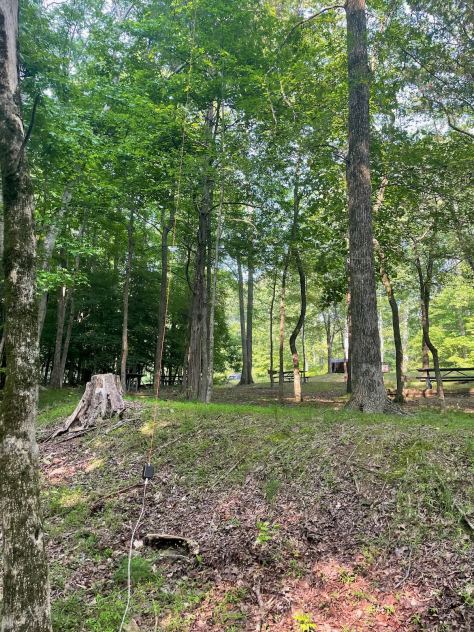 Somedays, I just need to stretch my legs with a good hike and Tuesday (June 6, 2023) was one of those days!
Somedays, I just need to stretch my legs with a good hike and Tuesday (June 6, 2023) was one of those days!
I had the afternoon wide open to do a POTA activation or two and since I was visiting my folks in Catawba County, I thought about hitting Fort Dobbs State Park and Lake Norman State Park. It would make for a fun two-park rove and would be very doable that afternoon.
Then it hit me that what I really wanted to do that afternoon was to take a nice, long, leisurely hike–fitting in both parks wouldn’t allow enough time for a proper hike. Thus, I ditched the idea of hitting both parks and chose to activate only Lake Norman because it has an amazing six mile “Lakeshore” loop trail that I love.
Thus, I ditched the idea of hitting both parks and chose to activate only Lake Norman because it has an amazing six mile “Lakeshore” loop trail that I love.
I arrived at the park a little after noon, parked at the spot where I planned to do my activation later, then walked to the trailhead and started my hike.
It was a gorgeous day–fairly hot and humid (we’re talking June in the Piedmont of NC) but still perfect for a hike.
 The trail follows the winding lake shore and is a very easy hike. I’m used to taking more mountainous trails, so to hike along a lakeshore is just pure fun.
The trail follows the winding lake shore and is a very easy hike. I’m used to taking more mountainous trails, so to hike along a lakeshore is just pure fun.
I hiked at a decent clip and by the time I made it back to my car, I was pretty darn sweaty. The humidity made sure of that!

Still: the hike was just what the doctor ordered!
Lake Norman State Park (K-2740)
 I grabbed my radio gear from the car and found a picnic table under the shade of trees. Continue reading Lake Norman: An amazing hike followed by a POTA activation with the TEN-TEC R4020
I grabbed my radio gear from the car and found a picnic table under the shade of trees. Continue reading Lake Norman: An amazing hike followed by a POTA activation with the TEN-TEC R4020






















































